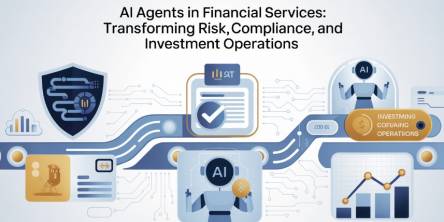Building a Strong Defense against Ransomware with Threat Intelligence Services

In the vast landscape of cyber threats, one adversary has emerged as a formidable force, disrupting businesses and causing chaos: ransomware. The surge in ransomware attacks has elevated the need for a robust defense strategy, and in this blog post, we'll explore how threat intelligence serves as the cornerstone in building resilience against these malicious campaigns. Brace yourself for a journey through the evolution of ransomware, the anatomy of a ransomware attack, and the proactive measures that can turn the tide in your favour.
Understanding the Ransomware Threat
Evolution of Ransomware
Ransomware has evolved from a mere nuisance to a sophisticated and lucrative criminal enterprise. Once characterized by simple screen lockers, modern ransomware employs advanced encryption algorithms, making data hostage situations more complex and lucrative for attackers. Understanding this evolution is crucial to crafting an effective defense strategy.
Anatomy of a Ransomware Attack
A typical ransomware attack follows a sinister script. It starts with an unsuspecting user clicking a malicious link or downloading a compromised attachment. Once inside the system, ransomware encrypts files, rendering them inaccessible. The attackers then demand a ransom for the decryption key. Knowing these stages is pivotal for devising a defense plan that interrupts the attack chain.
The Role of Threat Intelligence in Ransomware Defence
Early Detection and Prevention
Threat intelligence is the silent guardian that enables early detection and prevention of ransomware threats. By analyzing patterns, monitoring threat actors, and identifying indicators of compromise (IoCs), threat intelligence equips organizations to detect and neutralize potential ransomware attacks before they can wreak havoc. If you want to learn more about using these services, check out cyjax.com.
Ransomware-specific Threat Intelligence
Tailored threat intelligence focused on ransomware is a game-changer. It provides organizations with insights into the specific tactics, techniques, and procedures (TTPs) employed by ransomware actors. Armed with this information, defenders can proactively fortify their defenses against the evolving strategies of ransomware perpetrators.
Best Practices for Ransomware Defence
Regular Backups and Recovery Plans
A robust defense against ransomware begins with regular data backups. These backups serve as a safety net, allowing organizations to restore their systems to a pre-attack state. Coupled with comprehensive recovery plans, regular backups are a fundamental element in the fight against ransomware.
Employee Training and Awareness
Human error remains a significant factor in ransomware attacks. Employee training programs play a crucial role in raising awareness about phishing tactics and social engineering. By educating personnel on recognizing and reporting suspicious activities, organizations can significantly reduce the risk of falling victim to ransomware.
Endpoint Security Measures
Fortifying endpoints is essential in the battle against ransomware. Threat intelligence integrates seamlessly with endpoint security solutions, providing an additional layer of defense. The synergy between threat intelligence and endpoint security enhances the organization's ability to detect and block ransomware threats at the device level.
Is Threat Intelligence Services Aimed at Enterprises?
Most people feel like threat intelligence services are a big deal and an elaborate operation. Indeed, when you have a small business, you might feel like it’s a big investment and one that’s not aimed at you. It seems like a big step, and surely, these services aren’t interested in working with small businesses, right?
This couldn’t be further from the truth. First of all, know that threat intelligence services are beneficial for anyone. It doesn’t matter how big or small your business is; threats have the ability to cause significant damage and turn your world upside down. What’s more, cyber security companies offering their services want to help everyone. There’s no business that’s ‘too small’ for them. Let’s take a look at why threat intelligence services are beneficial for more than just enterprises.
You Are Being Proactive
Cyber threats can cause more damage than you can ever imagine. It can totally destroy your business, no matter what size it is. This is why you want to use threat intelligence services. It’s a way of monitoring threats and taking measures before they become a problem. You stop potential damage and feel more secure at the same time. Being proactive is always recommended, especially when it comes to cyber security.
You Give Customers Confidence
Many customers worry about their sensitive data, and they know that information can be stolen when it’s online. But, the good thing about using threat intelligence services is that you can protect them. Indeed, you can let your customers know that you’re investing in their safety, which has the added benefit of competitive advantage. You’re doing more than some of your competitors. At the same time, you’re still protecting your company. So, everybody wins.
You Can Avoid Worry
Let’s not forget that many business owners worry about their information and hackers getting hold of it. With threat intelligence services, you know that the risk is minimal. You have a strategy in place to find vulnerabilities and detect early problems before they happen. You’ve got an extra level of protection, which gives you freedom to focus on your business.
Conclusion
In the relentless battle against ransomware, threat intelligence stands as a beacon of hope. By understanding the evolution of ransomware, embracing threat intelligence, and implementing best practices, organizations can fortify their defenses. Collaborative efforts, adaptive strategies, and a commitment to overcoming challenges will shape a resilient future against the menace of ransomware. Stay informed, stay vigilant, and build a ransomware-resistant fortress for your digital assets.
Similar Articles
The financial services industry is entering an era where Finance AI Agents are revolutionizing how institutions operate.
The adoption of cloud technology has transformed the way businesses and individuals manage data.
Think back to the time when you had the biggest career choice of whether to take the corner office or the window cubicle? Those days are long gone
Custom CRM design is gaining traction because it’s built around your needs and the way your team works
PHP remains one of the most widely used server-side scripting languages in the world, powering millions of websites and web applications.
Do you tend to overshare on social media? Learn how to protect yourself by limiting what you post online and using dark web monitoring to track leaked data.
Ransomware attacks play a major part in all cybercrime attempts. Companies worldwide lost over 9 trillion USD to cybercriminals this way. How to protect yourself?
The choice of the right backend technology spells success for your web application.
In today’s data-driven world, businesses are immersed with endless sums of information from different sources. Integrating this data successfully is significant for producing significant insights, progressing decision-making, and optimizing forms









